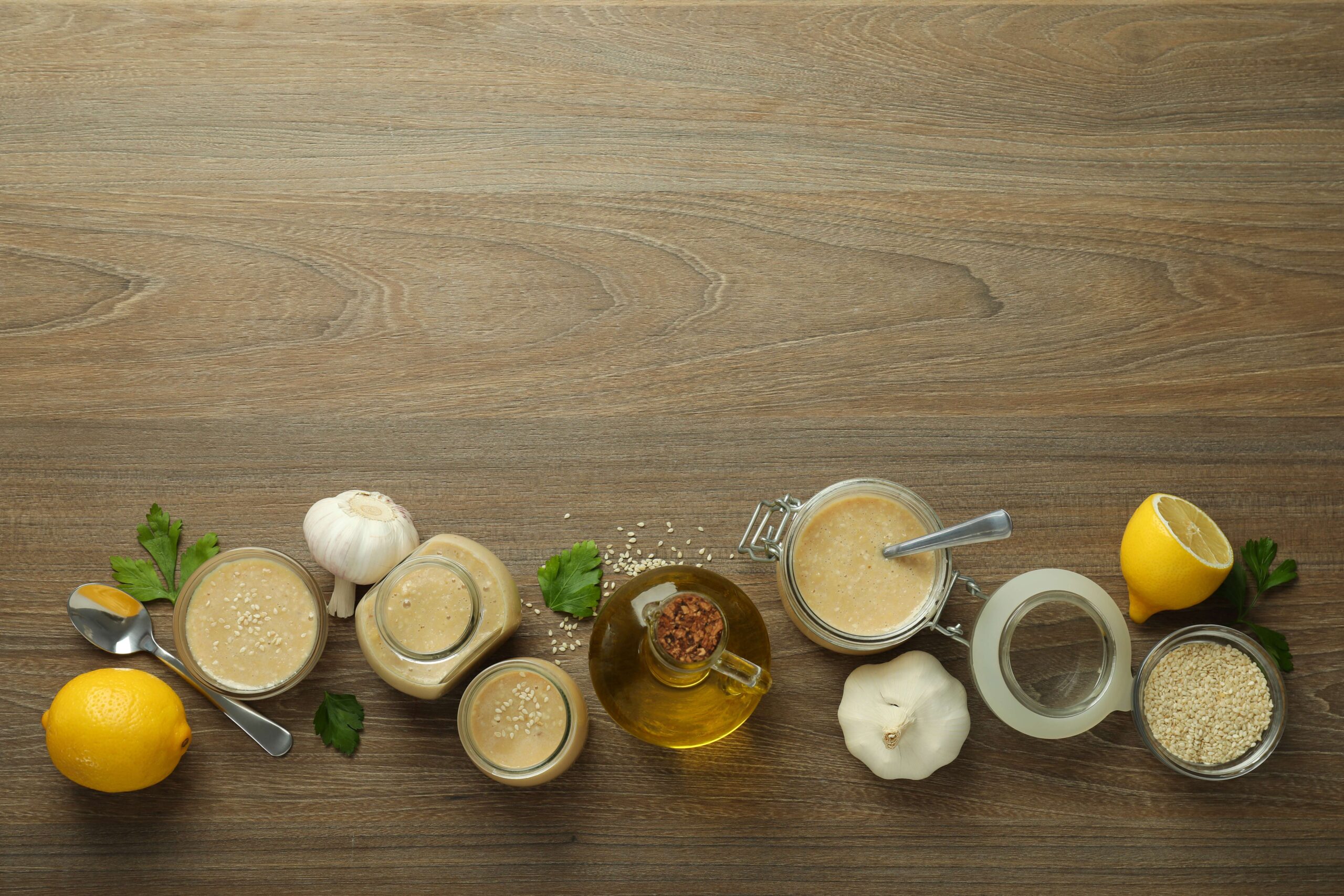Tahini and Olive Oil: A Perfect Culinary Pairing
The combination of tahini and olive oil is a culinary match made in heaven, bringing together two of the most essential ingredients in Mediterranean and Middle Eastern cuisine. These staples have been used for thousands of years in a variety of dishes, from creamy hummus to rich salad dressings, offering not only delicious flavors but also significant health benefits.
The Essence of Tahini
Tahini is a creamy paste made from ground sesame seeds, known for its nutty flavor and smooth consistency. It is a fundamental ingredient in many traditional dishes, particularly in the Middle East, where it is used in hummus, baba ganoush, and halva.
Key Characteristics of High-Quality Tahini:
- Made from hulled, lightly roasted sesame seeds for a balanced flavor.
- Should be smooth, pourable, and not overly thick.
- Naturally separates over time, with oil rising to the top—a sign of purity.
- Provides a rich, nutty taste with a mild earthiness.
The Role of Olive Oil
Olive oil, especially extra virgin olive oil (EVOO), is an essential component in Mediterranean cooking. Extracted from olives, it is prized for its fruity, slightly peppery flavor and its numerous health benefits. Whether used for cooking, drizzling, or dipping, high-quality olive oil enhances the texture and taste of a dish.
What Makes a Great Olive Oil?
- Cold-pressed extra virgin for the best flavor and nutrition.
- Should have a rich golden-green hue and a slightly peppery finish.
- Free from artificial additives or excessive refining.
- Complements both savory and sweet dishes.
How Tahini and Olive Oil Work Together
The pairing of tahini and olive oil creates a harmonious balance of flavors and textures. Tahini provides a deep, nutty, and slightly bitter note, while olive oil adds richness and a silky smoothness.
Top Culinary Uses for This Dynamic Duo:
- Hummus – A classic dish where olive oil enhances the silkiness of tahini and chickpeas.
- Tahini Dressing – A creamy, flavorful dressing made with tahini, olive oil, lemon juice, and garlic.
- Baba Ganoush – Smoky roasted eggplant blended with tahini and olive oil.
- Tahini Drizzles on Roasted Vegetables – A perfect finishing touch that adds depth and creaminess.
- Halva with Olive Oil – A rich, nutty sesame-based dessert elevated by fruity olive oil.
Health Benefits of Tahini and Olive Oil
Both tahini and olive oil are nutritional powerhouses, offering a range of health benefits:
- Heart Health – Rich in monounsaturated and polyunsaturated fats, both ingredients help support cardiovascular health.
- Anti-Inflammatory Properties – The antioxidants in olive oil and sesame seeds reduce inflammation in the body.
- Rich in Essential Nutrients – Tahini is a great source of calcium, iron, and magnesium, while olive oil provides vitamin E and polyphenols.
- Supports Digestion – The healthy fats in tahini and olive oil aid in digestion and nutrient absorption.
The Art of Pairing: Choosing the Best Ingredients
For the best culinary experience, selecting high-quality tahini and olive oil is essential.
- Best Tahini Brands: Al Arz (Israel), Soom (Palestinian-owned), Alwadi (Lebanon), Baraka (Jordan)
- Top Olive Oil Choices: Ptora (Israel), Sindyanna of Galilee (Fair Trade), Corto (California), Iliada (Greece)
Final Thoughts
Tahini and olive oil are more than just ingredients—they are symbols of culinary tradition, nutrition, and balance. Whether combined in savory spreads, drizzled over fresh vegetables, or mixed into desserts, they bring richness, depth, and authenticity to every dish. Their long history and versatility ensure that they will remain kitchen essentials for generations to come.
Next time you prepare a dish, experiment with tahini and olive oil together—you’ll experience an unmatched depth of flavor and nourishment in every bite.













